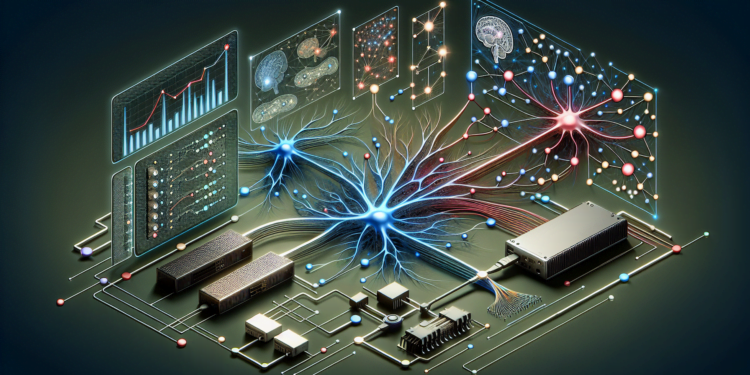Deep Neural Networks (DNNs) represent a revolutionary subdiscipline of Artificial Intelligence (AI) that emulates the mechanisms of the human brain to interpret complex data. This paradigm, fueled by massive amounts of information and computational power, marks a turning point in the ability of machines to perform tasks formerly exclusive to human intellect.
Theoretical Foundations
DNNs are extensions of traditional neural networks, incorporating multiple hidden layers that allow for the extraction of high-level features in their hierarchical processing. The universal approximation theory posits that a network with a single sufficiently large hidden layer can, in theory, approximate any continuous function. However, in practice, DNNs outperform their shallower counterparts by being more efficient and generalizing better, given adequate capacity and a sufficient amount of training data.
Algorithms and Optimization Techniques
Innovations in algorithms such as backpropagation and gradient descent have been fundamental to the effective training of DNNs. Advanced optimization techniques, like the use of Adam or AdaGrad, improve convergence and training stability. Regularization approaches, such as dropout and batch normalization, combat overfitting and promote model generalization.
Advances and Emerging Applications
The most celebrated application of DNNs is in the field of computer vision. Specifically, Convolutional Neural Networks (CNNs) have set the gold standard for image processing and analysis. In natural language processing (NLP), Transformer Networks, especially through models like BERT and GPT-3, have redefined what was thought possible in machine understanding and language generation.
Deep Reinforcement Learning
In deep reinforcement learning, DNNs form a crucial part of the algorithms for agents that learn optimal action policies in an environment through interaction and feedback in the form of rewards. Projects like DeepMind’s AlphaGo exemplify the overwhelming competence of these networks in tasks requiring strategic planning and decision making.
Medicine and Healthcare
In healthcare, DNNs are enabling advances in diagnosis and personalized treatment. Deep learning algorithms have proven capable of identifying complex patterns in medical data, from MRI images to genetic sequences, with levels of accuracy comparable or superior to human experts.
Comparative and Future Projection
Compared with machine learning methods from previous generations, DNNs have marked superior performance across a wide range of tasks. The integration with unsupervised and semi-supervised learning techniques is expanding the horizons for effective training with smaller sets of annotated data.
Challenges and Future Directions
One of the biggest hurdles faced by DNNs is the computational demand and the need for vast amounts of labeled data. Current research is focused on developing networks that can learn more efficiently and on generative models such as Generative Adversarial Networks (GANs) for the creation of realistic synthetic data.
Relevant Case Studies
A standout case study is DeepMind’s role in deploying AlphaFold, which tackles the problem of predicting protein structures, a Holy Grail in biochemistry. Using DNNs, AlphaFold has demonstrated outstanding accuracy, potentially accelerating the development of new drugs and the understanding of diseases.
Conclusion
Deep Neural Networks emerge in the AI landscape promising revolutionary milestones in diverse fields, from vehicular autonomy to the analysis of large data sets in astronomy. Despite challenges in terms of efficiency and understanding their workings, their capacity to extract intricate patterns and learn from complex data positions DNNs as a transformative force in the development of contemporary and future AI.






















